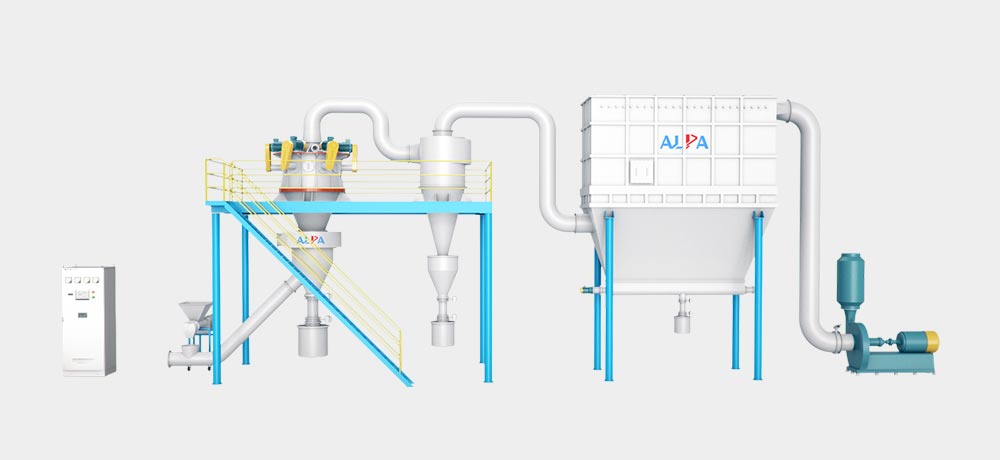7 categories of dry classification equipment and their operating principles

The function of classification is to control the progress of the crushing process and the particle size of the final product. Dry classification is a classification achieved with gas (usually air) as the medium. It is used in water shortage and arid areas, and when the process does not allow the presence of water. , dry grading is the only option. In severe cold areas, the application of dry grading is also not affected. Dry classification saves a lot of water and eliminates the problem of subsequent dehydration in wet classification. It is an effective energy-saving classification method.
Common dry classification equipment includes double impeller air classifier, O-Sepa vortex classifier, cyclone separator, turbine classifier, gravity sedimentation classifier, inertial classifier and jet classifier.
1. Double impeller air classifier
The double-impeller air classifier uses the principles of gravity sedimentation and centrifugal sedimentation to classify, and the product particle size can be as fine as -40 μm.
2. O-Sepa type eddy current classifier
The main structure of the machine includes a spreading plate, impeller, primary air duct, secondary air duct, tertiary air duct, guide blades and shell, etc.
3. Cyclone separator
The cyclone separator is a typical dry centrifugal sedimentation and classification equipment. Its main body consists of an upper cylinder and a lower truncated cone. A core tube is inserted along the central axis from top to bottom at the top of the cylinder, and there is a coarse product outlet at the bottom of the truncated cone. The feed material enters tangentially from the upper part of the cylinder near the outer circumference with the air flow, and is restricted by the shape of the classification chamber to form a swirling motion. The material particles produce radial centrifugal sedimentation motion in the air flow. Coarse particles centrifugally settle at a faster speed, move closer to the cylinder wall, and then slide along the cylinder wall and are discharged from the bottom. The fine particles have a slow centrifugal sedimentation speed, are suspended close to the axis, and then enter the core tube with the air flow and are discharged upward. There are many improved products in practical applications to adapt to different grading requirements and obtain higher grading performance. The classification particle size of the cyclone separator is related to its specification (cylinder diameter). The smaller the specification, the finer the classification particle size.
4. Turbine classifier
Turbine classifier is one of the most widely used dry ultra-fine classification equipment at present. It utilizes the principle of centrifugal sedimentation classification. Its main working component is the turbine (grading wheel), which is equipped with many blades to form a radial gap.
5. Dry gravity sedimentation classification equipment
The main dry gravity sedimentation classification equipment includes horizontal flow type, vertical flow type and meandering flow type gravity classifiers, etc., all of which are used in the ultra-fine stage.
6. Dry inertia classification equipment
The main dry inertial classification equipment includes linear, curved, louver and K-type inertial classifiers, with cut-point particle sizes ranging from 0.5 to 50 μm.
7. Jet classifier
Jet classifier is a dry ultra-fine classification equipment that utilizes jet technology, inertia principle and Coanda effect. Jet technology is used for feeding materials, which allows the feed particles to obtain the necessary inlet velocity and allows the air flow to better produce a Coanda effect. The Coanda effect is when there is surface friction between a fluid (liquid or gas) and the surface of the object it flows through, causing the fluid to slow down. As long as the curvature of the surface of the object is not too large, according to Bernoulli’s principle in fluid mechanics, the slowdown in flow speed will cause the fluid to be adsorbed on the surface of the object.
